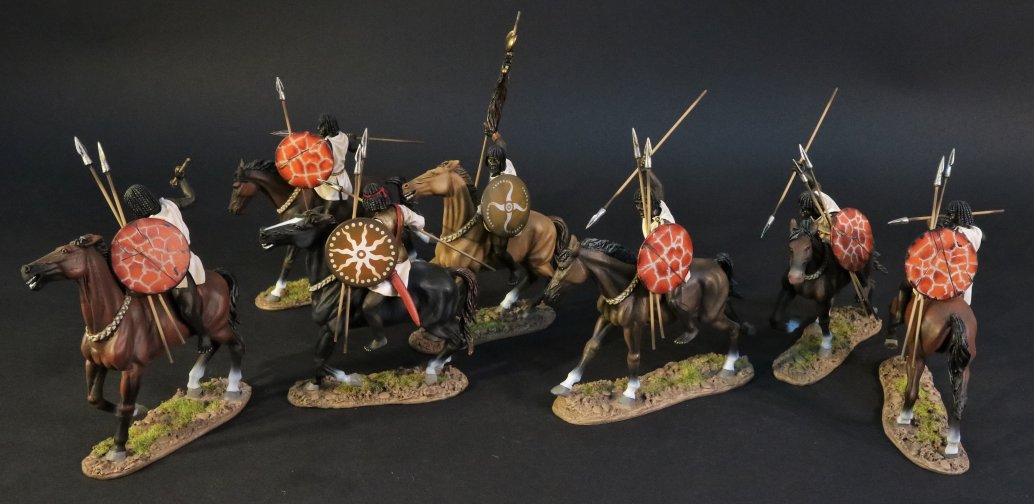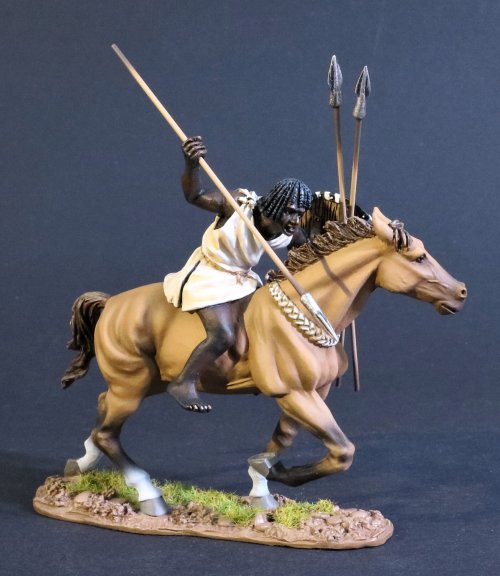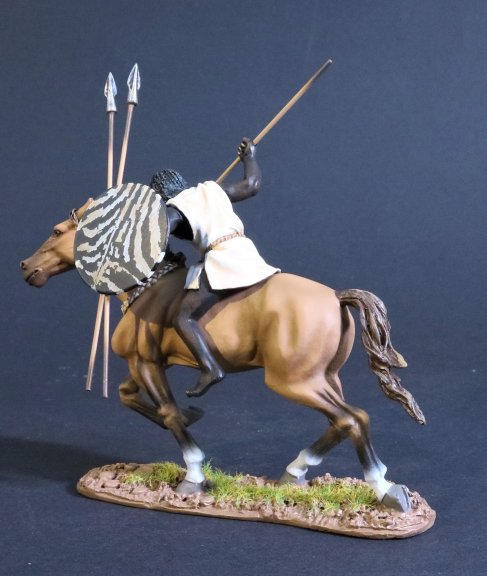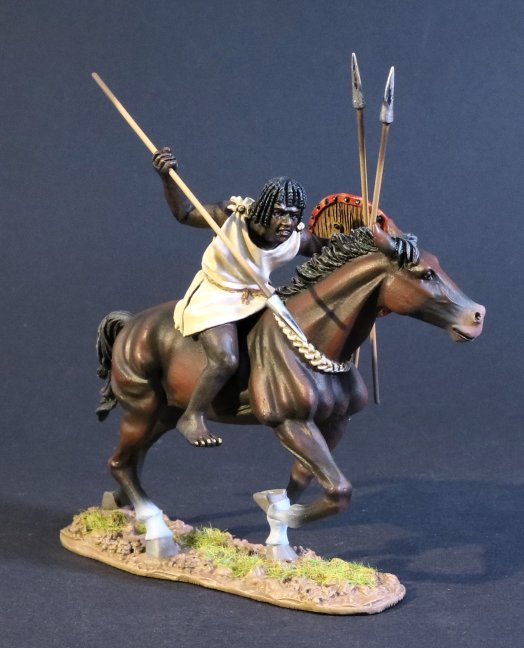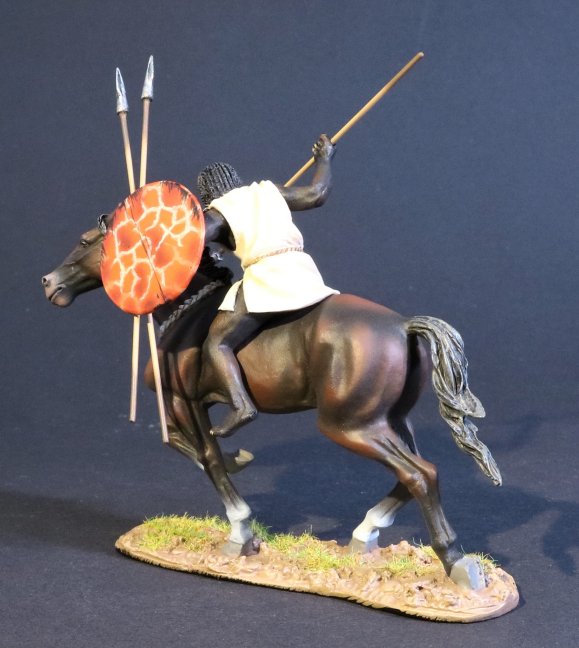- Joined
- Feb 2, 2011
- Messages
- 2,093
NEW RELEASES FOR JULY 2021
THE ANCIENTS COLLECTION
ARMIES AND ENEMIES OF ANCIENT ROME
REPUBLICAN ROMANS
THE ROMAN ARMY OF THE LATE REPUBLIC
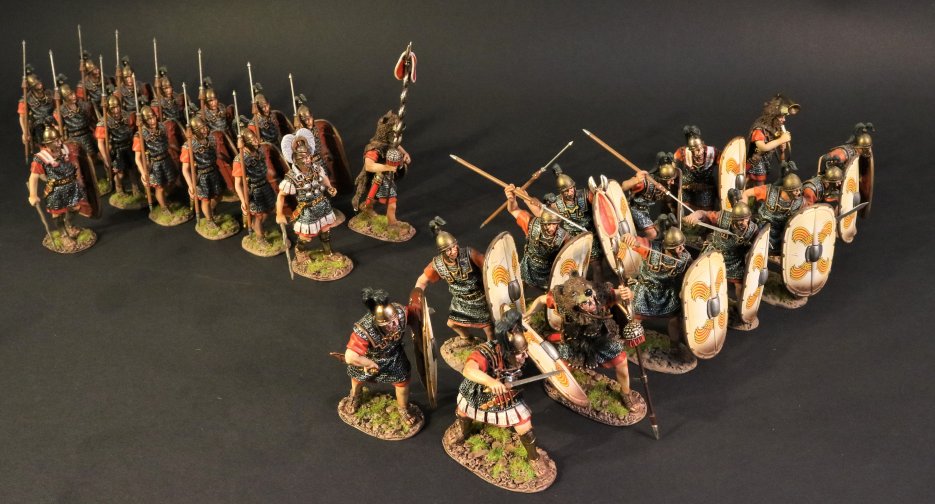
By the first decades of the 1st century, the COHORT had replaced the maniple as the standard tactical unit of the legions.
The three lines of the manipular legion were combined to form the cohort, which generally numbered about 480 to 500 men. Maniples and centuries continued to be used as military and administrative subdivisions for the cohort.
There were six centuries in a cohort, which were now all 80-men strong.
Each Centuria was commanded by a Centurion, and also included an Optio, a Signifer and a Cornicen.
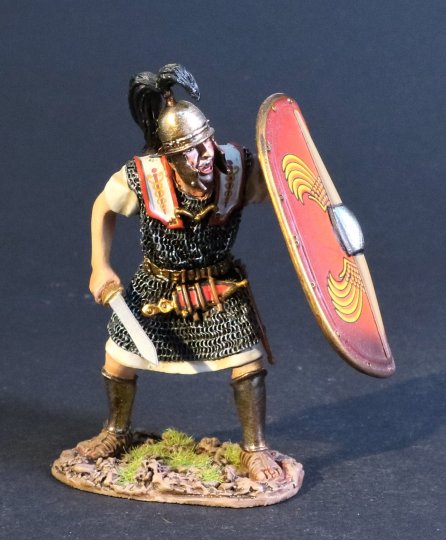
RR-03BR
ARMIES AND ENEMIES OF ANCIENT ROME,
THE ROMAN ARMY OF THE LATE REPUBLIC,
OPTIO.
(1 pc)
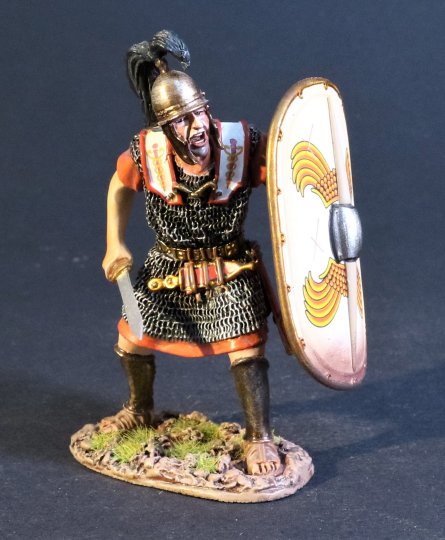
RR-03BW
ARMIES AND ENEMIES OF ANCIENT ROME,
THE ROMAN ARMY OF THE LATE REPUBLIC,
OPTIO.
(1 pc)
The Centurions also appointed the bravest men as standard bearers, or Signifers.
A signifer was a standard bearer of the Roman legions. He carried a signum (standard) for a cohort or century. Each century had a signifer so there were 59 in a legion. Within each cohort, the first century's signifer would be the senior one.
The signum that he carried was the military emblem of that unit. It had a number of phalarae (disks or medallions) along with a number of other elements mounted on a pole. The pole could be topped with a leaf-shaped spear head or later a manus (open human hand) image denoting the oath of loyalty taken by the soldiers. It sometimes included a representation of a wreath, probably denoting an honour or award.
The task of carrying the signum in battle was dangerous, as the soldier had to stand in the first rank and could carry only a small buckler. It was that banner that the men from each individual century would rally around. A soldier could also gain the position of discentes signiferorum, or standard bearer in training. If the signifer was lost in battle, the whole unit was dishonored.
In addition to carrying the signum, the signifer also assumed responsibility for the financial administration of the unit and functioned as the legionaries' banker. He was paid twice the basic wage.
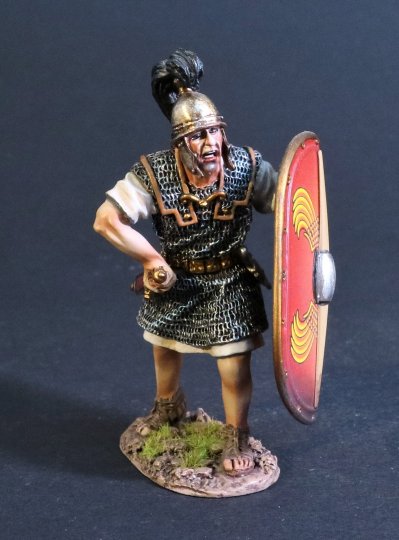
RR-19R
ARMIES AND ENEMIES OF ANCIENT ROME,
THE ROMAN ARMY OF THE LATE REPUBLIC,
LEGIONAIRE.
(1 pc)
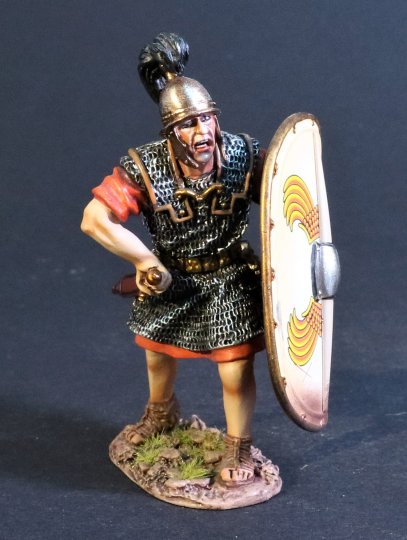
RR-19W
ARMIES AND ENEMIES OF ANCIENT ROME,
THE ROMAN ARMY OF THE LATE REPUBLIC,
LEGIONAIRE.
(1 pc)
REPUBLICAN ROMAN CAVALRY
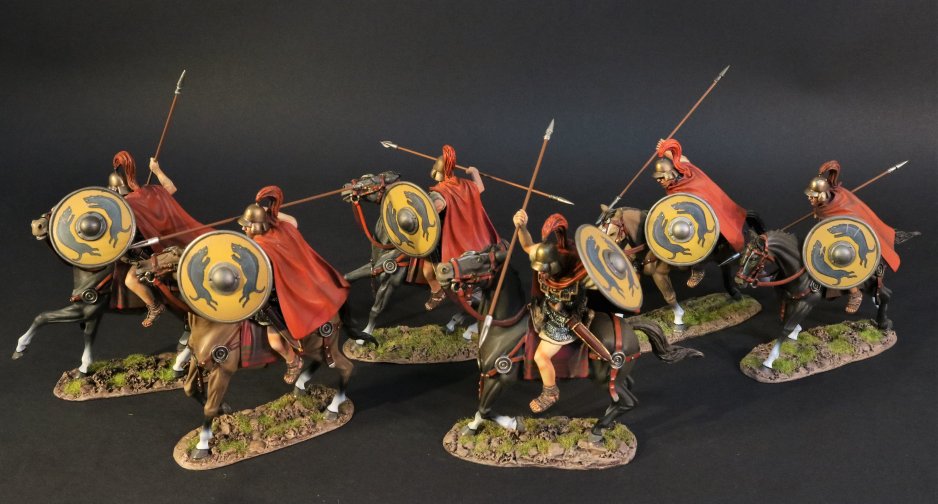
Roman cavalry became an integral part of the legion in this period.
As the stirrup had not yet been developed, riding was an acquired skill, and the Roman saddle was designed to keep the cavalryman mounted firmly on the horse. At this time cavalry were auxiliary troops used mainly for scouting, skirmishing and to combat enemy cavalry.
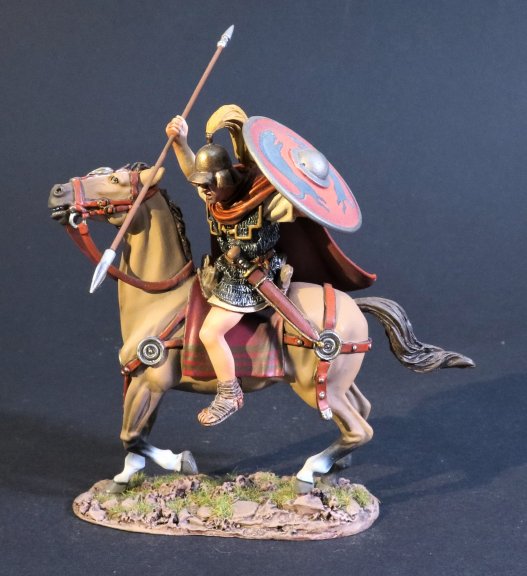
MRRCAV-06R
ARMIES AND ENEMIES OF ANCIENT ROME,
THE ROMAN ARMY OF THE MID REPUBLIC,
ROMAN CAVALRY.
(2 pcs)
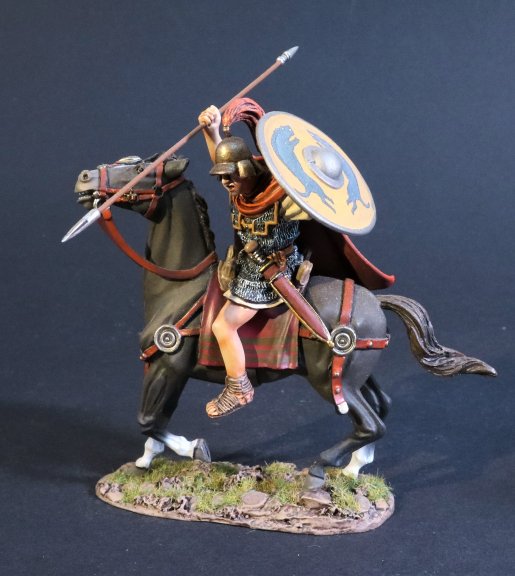
MRRCAV-06Y
ARMIES AND ENEMIES OF ANCIENT ROME,
THE ROMAN ARMY OF THE MID REPUBLIC,
ROMAN CAVALRY.
(2 pcs)
THE ANCIENTS COLLECTION
ARMIES AND ENEMIES OF ANCIENT ROME
REPUBLICAN ROMANS
THE ROMAN ARMY OF THE LATE REPUBLIC

By the first decades of the 1st century, the COHORT had replaced the maniple as the standard tactical unit of the legions.
The three lines of the manipular legion were combined to form the cohort, which generally numbered about 480 to 500 men. Maniples and centuries continued to be used as military and administrative subdivisions for the cohort.
There were six centuries in a cohort, which were now all 80-men strong.
Each Centuria was commanded by a Centurion, and also included an Optio, a Signifer and a Cornicen.

RR-03BR
ARMIES AND ENEMIES OF ANCIENT ROME,
THE ROMAN ARMY OF THE LATE REPUBLIC,
OPTIO.
(1 pc)

RR-03BW
ARMIES AND ENEMIES OF ANCIENT ROME,
THE ROMAN ARMY OF THE LATE REPUBLIC,
OPTIO.
(1 pc)
The Centurions also appointed the bravest men as standard bearers, or Signifers.
A signifer was a standard bearer of the Roman legions. He carried a signum (standard) for a cohort or century. Each century had a signifer so there were 59 in a legion. Within each cohort, the first century's signifer would be the senior one.
The signum that he carried was the military emblem of that unit. It had a number of phalarae (disks or medallions) along with a number of other elements mounted on a pole. The pole could be topped with a leaf-shaped spear head or later a manus (open human hand) image denoting the oath of loyalty taken by the soldiers. It sometimes included a representation of a wreath, probably denoting an honour or award.
The task of carrying the signum in battle was dangerous, as the soldier had to stand in the first rank and could carry only a small buckler. It was that banner that the men from each individual century would rally around. A soldier could also gain the position of discentes signiferorum, or standard bearer in training. If the signifer was lost in battle, the whole unit was dishonored.
In addition to carrying the signum, the signifer also assumed responsibility for the financial administration of the unit and functioned as the legionaries' banker. He was paid twice the basic wage.

RR-19R
ARMIES AND ENEMIES OF ANCIENT ROME,
THE ROMAN ARMY OF THE LATE REPUBLIC,
LEGIONAIRE.
(1 pc)

RR-19W
ARMIES AND ENEMIES OF ANCIENT ROME,
THE ROMAN ARMY OF THE LATE REPUBLIC,
LEGIONAIRE.
(1 pc)
REPUBLICAN ROMAN CAVALRY

Roman cavalry became an integral part of the legion in this period.
As the stirrup had not yet been developed, riding was an acquired skill, and the Roman saddle was designed to keep the cavalryman mounted firmly on the horse. At this time cavalry were auxiliary troops used mainly for scouting, skirmishing and to combat enemy cavalry.

MRRCAV-06R
ARMIES AND ENEMIES OF ANCIENT ROME,
THE ROMAN ARMY OF THE MID REPUBLIC,
ROMAN CAVALRY.
(2 pcs)

MRRCAV-06Y
ARMIES AND ENEMIES OF ANCIENT ROME,
THE ROMAN ARMY OF THE MID REPUBLIC,
ROMAN CAVALRY.
(2 pcs)


